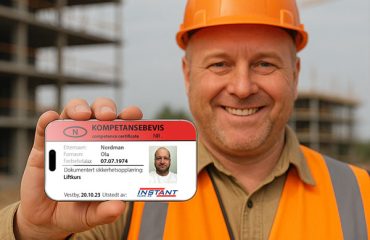
Many organisations with HSE courses focus exclusively on the theoretical part of the training. We go much further. With us, you get documented training that combines theory and practical training, as required by the regulations – and as expected by working life. In addition to online courses, we offer the opportunity for practical training either at one of our locations, local partners or as in-house training (with a competent person).
Requirement for documentation of all training – including the practical part.
The Labour Inspection Authority is clear that without a practical part, the course will not meet the regulation’s requirement for practice. When we issue a certificate of competence, we ensure that the theoretical and practical training has been completed and documented. This gives both employer and employee the security required in the event of inspections, accidents or liability cases. We help you fulfil the requirements of the Working Environment Act and relevant regulations.
Practical training is not optional – it’s essential.
Without practical training, training is not complete. Theory provides understanding, but it’s through practice that you learn to use the equipment correctly and work safely in real-life situations. The practical training should enable the course participant to carry out their work tasks safely. The user must receive full training in the safe and correct use of the equipment, with particular focus on correct use in accordance with the user manual, as well as a review of any protective devices.
Several of our courses require practical training. This must be documented. This can either be done by signing up for a practical course at one of our departments (see course calendar) or by conducting this in-house. We require that the person who carries out the practical training knows the documents and has at least completed a similar course before (this must be documented).
Practical checklists:
So what should the practical training include? We have prepared separate checklists for each of the individual courses so that you know what tasks you need to complete and master. You can find the checklists for the different courses here.
When completing documented training – consider the following:
– Complete training = theory + practice
– Make sure the training is documented in line with current legislation
– E-learning and practical training are both effective and educational
– Focus on real competence – not just course certificates (diplomas)
– Language – make sure the training is given in a language the participant is fluent in




